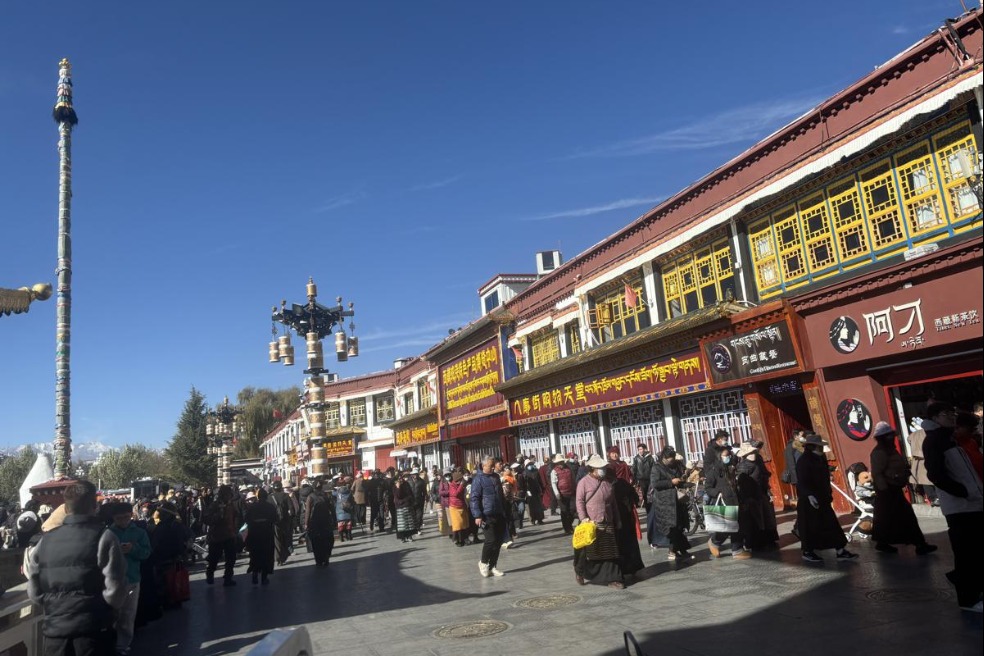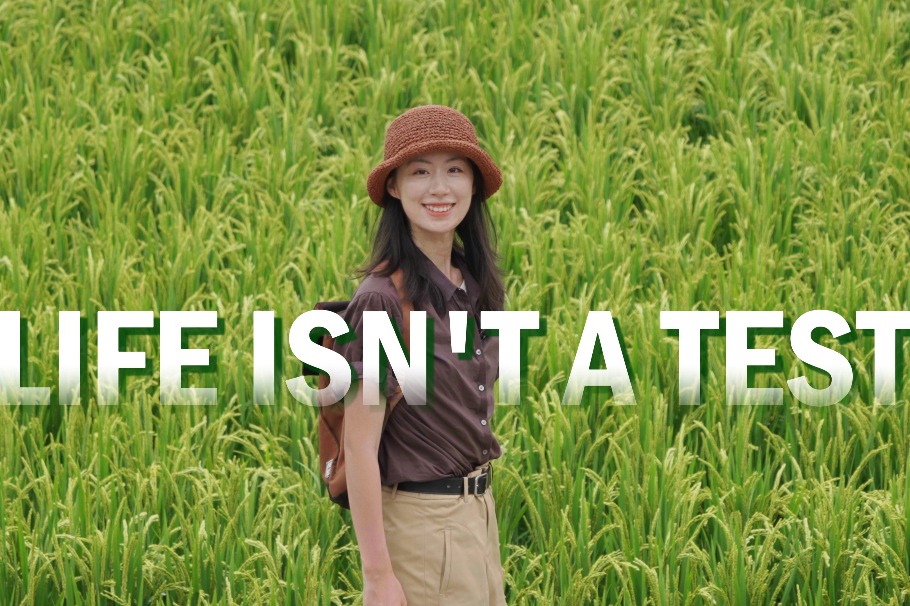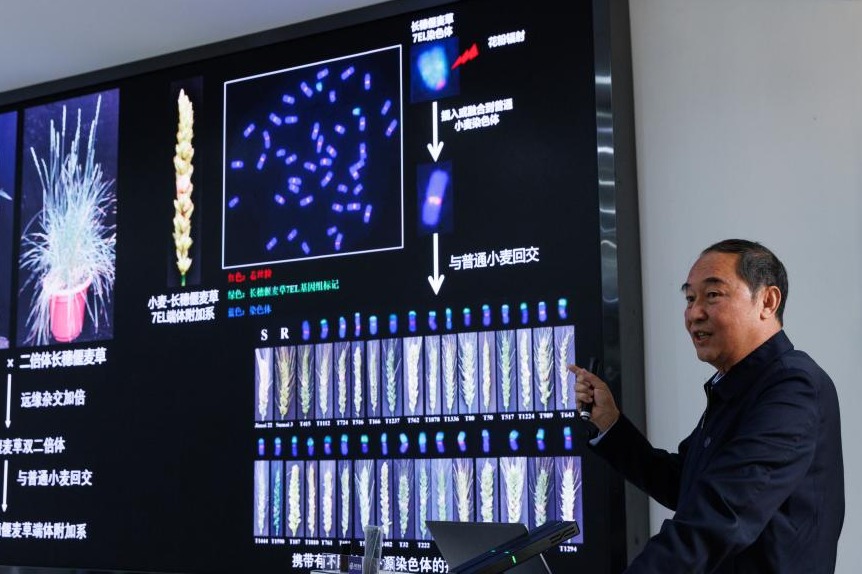What's on

Art of dressing
People of high social standing in ancient times would put on different styles of outfits in accordance with the occasions they were to attend. For instance, the jifu, or "auspicious robe", used to be worn for ceremonies of celebration such as birthdays, weddings, banquets and festivals. A rare specimen of the kind from the Ming Dynasty (1368-1644), blue with an intricate, patterned overlay, has been added to Ancient Chinese Culture: Costume and Adornment, a long-term exhibition at the National Museum of China in Beijing. The robe was a heritage item passed on through the generations of Confucius' family, and used to be kept successively at the Confucius ancestral hall in Qufu, Shandong province, and the city's Confucius Museum. Another new object on show is a gold buckle featuring dragon patterns, dated to the Eastern Han Dynasty (AD 25-220). The object is from the collection of the city museum of Tianshui, Gansu province. Opened in early 2021, the exhibition at the National Museum of China presents the changing variety of textile production techniques, dress styles and aesthetic views on costumes and ornaments throughout the centuries. It also explains the relationship between clothing and social hierarchy, conduct and etiquette.
9 am-5 pm, closed on Mondays. 16 East Chang'an Avenue, Dongcheng district, Beijing.010-6511-6400.
Painted porcelain
Zibo, in Shandong province, has gained huge fame recently for its booming barbecue business with affordable prices, which is attracting eaters from across the country. Less well-known is that the manufacturing city is also a production center for daily-use ceramics. Pottery produced by the Longshan culture in the late Neolithic period has been found in Zibo, and pottery-making thrived in the city as early as in the Spring and Autumn Period (770-476 BC). Nurtured by his hometown's cultural accumulations throughout the centuries, Ma Shuoshan has dedicated his life to the creation of classic Chinese painting and painted ceramics. His ongoing exhibition at the Chinese Traditional Culture Museum shows his attempts to present the glamor of Chinese painting and calligraphy on the semi-translucent surface of porcelain. His works convey an attachment to his hometown and the artistic tradition he was immersed in while growing up. He transplants the spirituality of paper-based ink art to a polished surface that also glitters with long-standing Chinese tradition. The exhibition runs through to June 27.
9 am-5 pm, closed on Mondays.16 Hujing East Road, Chaoyang district, Beijing. 010-8799-1766/1866.
Man of poetry
Qi Baishi (1864-1957), one of the pinnacle figures of modern Chinese ink art, is best known for his paintings incorporating detailed depictions of insects and loose brushwork to portray plants, figures and landscapes. Qi himself said that of all his artistic output — including seal engraving, calligraphy and painting — he believed he was most accomplished in poetic composition. The four forms of art used to be seen as a whole, and an accomplished ink artist like Qi usually designed engraved seals himself and composed poems or verses on paintings to enrich their meaning. Baishi Versifies, an exhibition at the Art Museum of the Beijing Fine Art Academy, focuses on Qi's poetic attainments, which he valued greatly as a way to add depth to his paintings. Born to a destitute family, Qi had little schooling, and was self-taught in literature and art. His works on show, inspired by classic poems and inscribed with his own compositions, illustrate his long-term effort to combine the beauty of painting, poetry and calligraphy. The exhibition runs through to Nov 24.
9 am-5 pm, closed on Mondays. 12 Chaoyang Gongyuan Nan Lu, Chaoyang district, Beijing.010-6502-5171.



Today's Top News
- Effective use of investment emphasized
- China's shuttle diplomacy strives to reach ceasefire
- Nanjing Museum's handling of donated art, relics being probed
- Key role of central SOEs emphasized
- New travel program hailed as 'milestone'
- Animated films top draw at box office






























